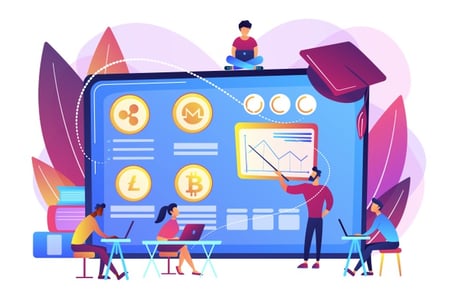It feels like we are coming to the end of something, at the same time we are on the doorstep of something new. The end is the end of pandemic living and the new is whatever version of blended work and learning is going to happen next.
something new. The end is the end of pandemic living and the new is whatever version of blended work and learning is going to happen next.
By September, many people will be “back” in their offices. But it will not be the same. As I scan the literature – and there is a lot of it to read – the prevailing data suggests:
- 80%-90% of organizations will have some sort of flexible work at home policy.
- 75% of all employees have re-thought their living arrangements for purposes of commuting, not commuting and having mobility.
- Workers will never go back to a 100% in-office environment.
- 50% of workers will want more balance and time for living and getting healthy again in the near future.
- 35% of all workers feel optimistic about the future of work (which means 65% feel a lot of uncertainty.
Over the recent days, I have felt an unprecedented groundswell of Talent Development clients who think we are going to go back to in-person training for some portion of their learning events by the end of the year.
What’s interesting is that the single biggest driver of this desire (beside just getting out of the home) is the need for networking and interpersonal contact. While that is a critical part of learning, I would like to present a contrarian view to going back to a 100% live, in-person learning environment.
Over the past 16 months, we have delivered virtual simulation workshops to more than 10,000 learners around the world. One of the benefits that we have learned, and I am shocked is not being talked about enough, is the psychological safety, diversity, and inclusion of simulation-centric learning. At Advantexe, we have discovered that learning and working together on digital case studies that come to life offers an incredible safe learning environment where:
There is almost no bullying – In the virtual environment, there is significantly less intimidation, eye rolling, posturing, and putting down of other participants when they don’t know things. “The screen” is a great equalizer and as a facilitator, we are able to control the learning environment much better.
Learners can see better – Again, when using a screen and utilizing virtual breakout rooms to engage in a Business Acumen simulation, all participants are much more equal. They aren’t stuck in the back of a classroom, they aren’t intimated and discouraged from sitting with the cool people, and there are no “clicks” that exclude others because of function, race, sexual orientation, or looks. Everyone is much more included and equal in virtual learning environments.
Women feel safer – For all the reasons above plus physically. During several conversations and focus groups on the benefits of the new virtual learning environment, we have heard from many women who feel much safer knowing that they aren’t stuck in a breakout room with someone who “accidently” touches them under the table or puts them in an uncompromising position during a break. It is a lot worse than any of us have ever imagined.
There is Equality on the Screen – On screen, everyone is more equal. It’s not perfect, but what you experience in a virtual environment is 14 by 8 inches of clear screen and people who are excited to be working together. There is so much less worry about appearance including size, weight, height, skin color, and even the types of clothes you wear. What is also interesting is that there is an increased level of intimacy when you “go into someone’s home” and see their office, pets, and kids. It has been so much more human.
There is Increased Competency Development – The opportunity to learn in a diverse, risk-free, clear, and safe environment has had extreme impact on competency development. The scores of participants have been higher, and I recently did an analysis of the creation of Total Shareholder Value (TSR) of the aggregate business simulations results for clients we worked with during 2019 and compared it to the past 15 months. The total TSR across several industries including Pharmaceuticals, High-tech, Financial Services, Chemicals, and Consumer Packaged Goods companies has increased by over 20%. In my opinion, that is translating directly into the skills needed to make better business decisions and drive better results.
In summary, there is no stopping the reemergence of in-person, classroom learning. My hope is that we can take the best of virtual and leverage it into a new blended model that takes advantage of the benefits of both.




